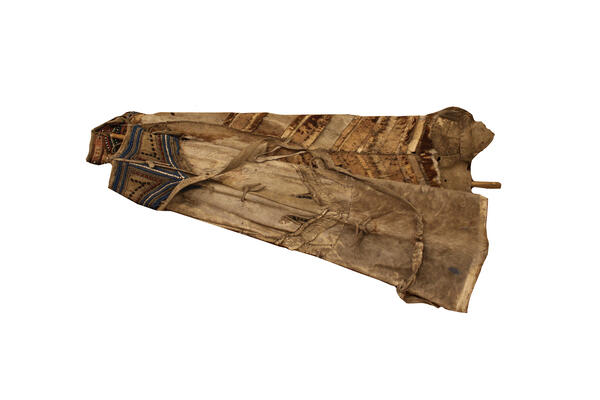A quiver — a special case for arrows, which at different times was made of leather, wood, fabric, metal. Many peoples have used the quiver for storing and carrying arrows since the Neolithic era. In the North of the Yeniseysk district, residents made quivers from deer skins, decorated with beads and fabric. The arrows needed to be well balanced, and they had to be well dried and protected from moisture, so both bows and arrows were carried in special cases.
Before the use of the quiver, a shell for arrows served as a case for arrows, which was worn at the waist and was part of the equipment of an archer on foot (tulovets). However, this method of carrying arrows was not suitable for a horse archer, since the arrows became useless due to shaking during the race and it was difficult to get them for shooting at a gallop.
Therefore, the Tul gradually gave way to the quiver borrowed from the Turkic people — a flat leather case with additional ribs or partitions inside prevented the arrows from shaking when jumping. The quiver could have separate external pockets for placing a whip, knife, flail. Sometimes it was worn on top of the so-called Tohtuy — cover for protection from precipitation. The arrows in the quiver were placed with their plumage upward so that they were easy to reach.
During shooting, the archer would take the arrow out of the quiver with his right hand, set the arrowhead forward, holding the arrow shaft with the fingers of his left hand, squeezing the back of the bow, and checked the quality of the arrow (no shavings, roughness, condition of plumage). When he reached the ear of the arrow, he put it on the string with a sharp movement. He would pull the bowstring until the arrowhead reached the thumb of his left hand. Then he would fire a shot.
With the development of firearms, archers gradually disappeared from the armies, and archery became an entertainment as well as sports. In 1900, at the summer Olympics in Paris, the first archery competition was held with arrows for accuracy or range. At the same time, the quiver remained one of the most important accessories for archers.
Before the use of the quiver, a shell for arrows served as a case for arrows, which was worn at the waist and was part of the equipment of an archer on foot (tulovets). However, this method of carrying arrows was not suitable for a horse archer, since the arrows became useless due to shaking during the race and it was difficult to get them for shooting at a gallop.
Therefore, the Tul gradually gave way to the quiver borrowed from the Turkic people — a flat leather case with additional ribs or partitions inside prevented the arrows from shaking when jumping. The quiver could have separate external pockets for placing a whip, knife, flail. Sometimes it was worn on top of the so-called Tohtuy — cover for protection from precipitation. The arrows in the quiver were placed with their plumage upward so that they were easy to reach.
During shooting, the archer would take the arrow out of the quiver with his right hand, set the arrowhead forward, holding the arrow shaft with the fingers of his left hand, squeezing the back of the bow, and checked the quality of the arrow (no shavings, roughness, condition of plumage). When he reached the ear of the arrow, he put it on the string with a sharp movement. He would pull the bowstring until the arrowhead reached the thumb of his left hand. Then he would fire a shot.
With the development of firearms, archers gradually disappeared from the armies, and archery became an entertainment as well as sports. In 1900, at the summer Olympics in Paris, the first archery competition was held with arrows for accuracy or range. At the same time, the quiver remained one of the most important accessories for archers.



